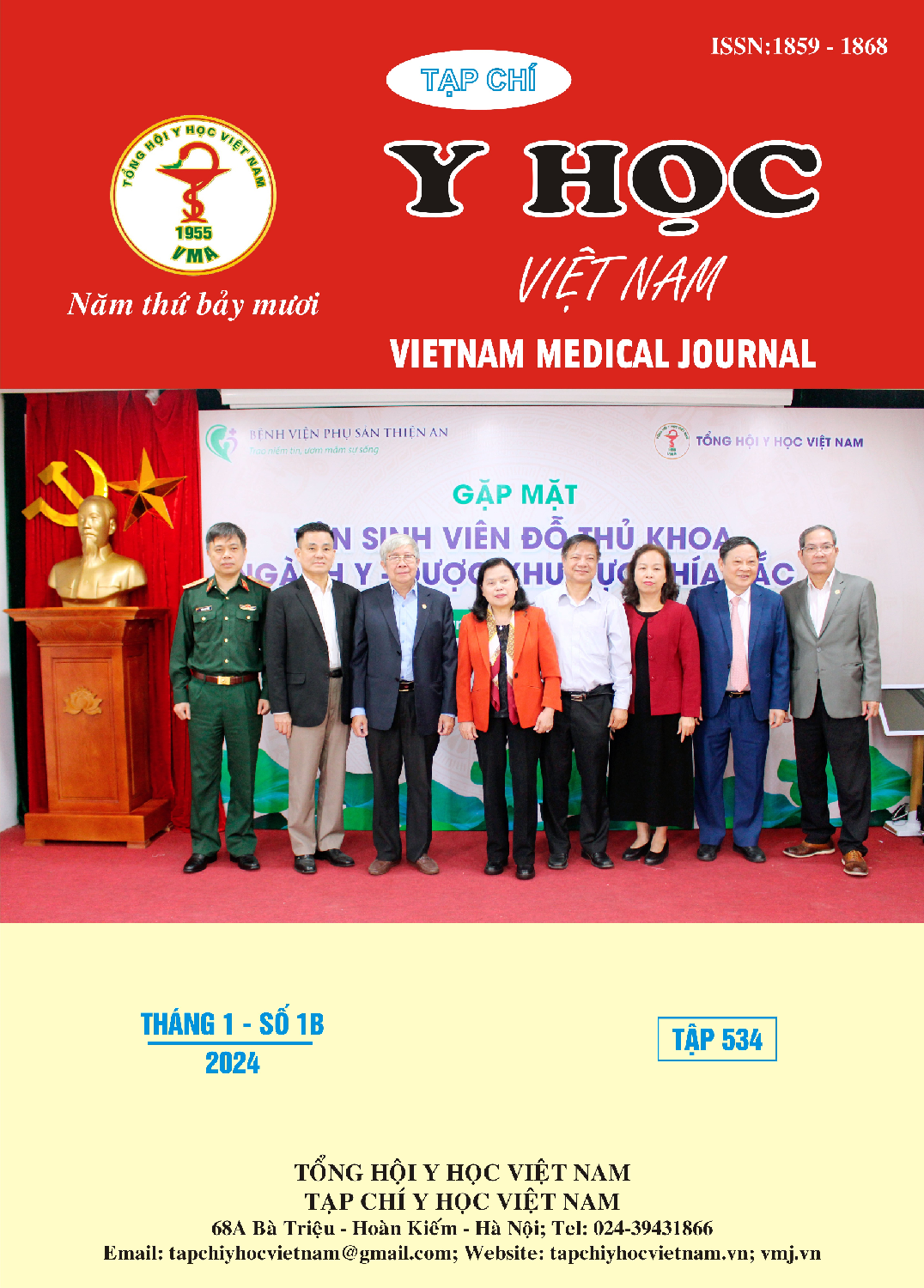COMPARISON OF THE EFFECTIVENESS OF TWO CIRCUMFERENTIAL MATRIX SYSTEMS IN CREATING PROXIMAL CONTACTS IN VITRO
Main Article Content
Abstract
Objective: To compare the quality of proximal contact areas restored using two precontoured circumferential matrix systems - Palodent 360 and Garrison ReelMatrix. Methods: MOD Class II preparations were placed on 16 maxillary first molar typodont teeth. The teeth were then randomly distributed into two groups, Group 1 was restored using Palodent 360 system, group 2 was restored using Garrison ReelMatrix system, a separation ring was used at the mesial contact in both groups. After restoration, a dental floss impregnated with ink was passed through each contact area to mark the area and evaluate contact tightness. The proximal surfaces were then photographed at a fixed distance to a camera for the location and size of the contact areas to be measured in the ImageJ software. Excessive composite at the gingival margin of the restorations was evaluated with direct vision and a dental probe. Results: There is no significant difference in the tightness, location and size of the contacts between two groups. Group 1 has significantly less teeth with excessive composite at the mesial box compared to Group 2 (0/8 teeth compared to 8/8 teeth), there is no significant difference in excessive composite at the distal box between two groups. Conclusion: The Palodent 360 and Garrison ReelMatrix systems restore proximal contacts with similar tightness, location and size. However, the Garrison ReelMatrix system is more likely to result in excessive composite at the gingival margin.
Article Details
References
2. Loomans BAC, Opdam NJM, Roeters FJM, Bronkhorst EM, Burgersdijk RCW. Comparison of Proximal Contacts of Class II Resin Composite Restorations In Vitro. Operative Dentistry. 2006;31(6):688-693
3. Wirsching E, Loomans BAC, Klaiber B, Dörfer CE. Influence of matrix systems on proximal contact tightness of 2- and 3-surface posterior composite restorations in vivo. Journal of Dentistry. 2011;39(5):386-390
4. Loomans B a. C, Opdam NJM, Roeters FJM, Bronkhorst EM, Huysmans MCDNJM. Restoration techniques and marginal overhang in Class II composite resin restorations. J Dent. 2009;37(9):712-717
5. Shennib HA, Wilson NH. An investigation of the adequacy of interproximal matrices commonly used with posterior composite restoratives. J Dent. 1986;14(2):84-86
6. Saber MH, Loomans BAC, El Zohairy A, Dörfer CE, El-Badrawy W. Evaluation of proximal contact tightness of Class II resin composite restorations. Oper Dent. 2010;35(1):37-43
7. Khan F, Umer F, Rahman M. Comparison of Proximal Contact and Contours of Premolars restored with Composite Restoration using Circumferential Matrix Band with and without Separation Ring: A Randomized Clinical Trial. International Journal of Prosthodontics and Restorative Dentistry. 2013;3:7-13
8. Oh SH, Nakano M, Bando E, Shigemoto S, Kori M. Evaluation of proximal tooth contact tightness at rest and during clenching. J Oral Rehabil. 2004;31(6):538-545


